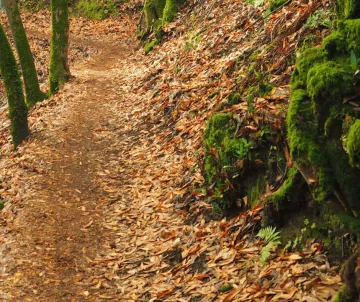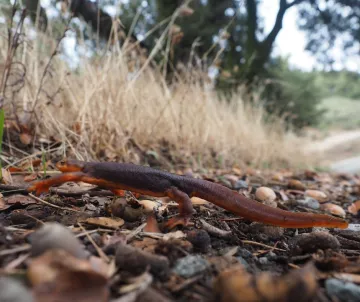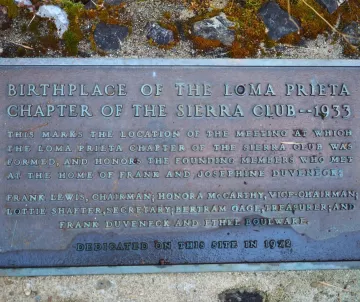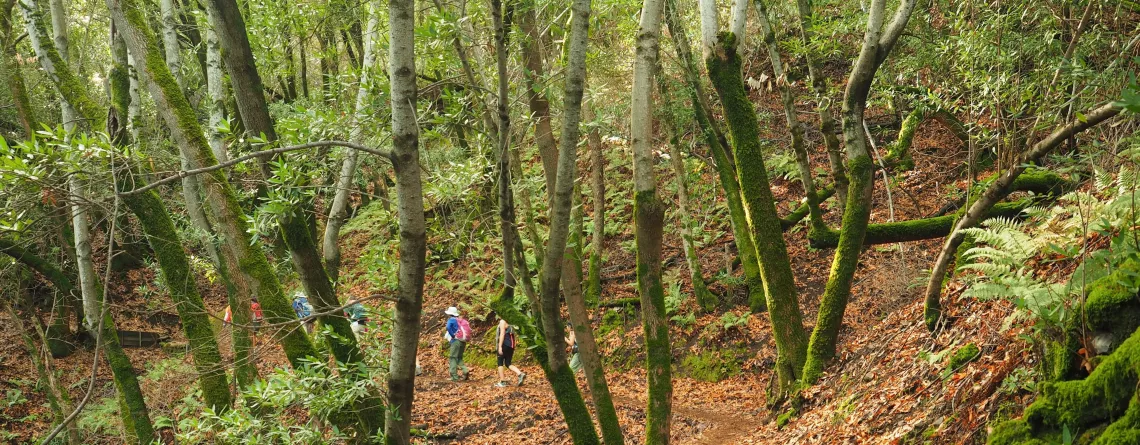
Hidden Villa is a nonprofit educational organization that uses its organic farm, wilderness, and community to teach and provide opportunities to learn about the environment and social justice. Hidden Villa stretches over 1600 acres of open space in the foothills of the Santa Cruz Mountains, about 40 miles south of San Francisco.
Hidden Villa was founded by Frank and Josephine, co-founders of the Sierra Club Loma Prieta chapter in 1933, who purchased the land in 1924 and offered it as a gathering place for discussion, reflection, and incubation of social reform. The Trust for Hidden Villa was established as a nonprofit in 1960.
Every year 30,000 people participate in one of their formal programs. An additional 20,000 visitors come to their preserve annually to explore the farm and gardens or to hike their eight miles of trails. Hidden Villa’s organic farm, rustic barns, newer sustainable structures and pristine riparian woodland and chaparral wilderness provide opportunities to experience the beauty of the environment on a first hand basis.

Species
Hidden Villa’s farm houses a variety of animals, including Jersey cows, goats, pigs, sheep and chickens. Plants, rocks, downed wood, and wildflowers belong to the land, along with some trail hiker dangers such as poison oak, rattlesnakes, and ticks. A couple of the wildflowers that can be found on the trails include Goldenfields and California Poppies.
Agriculture
A majority of the food grown through the Community Supported Agriculture Program provides subscribing Hidden Villa members with a weekly share of fresh, organic vegetables and fruits grown on their farm. In 2013 the Community Supported Agriculture Program also began incorporating special add-ons to their shareholder program. A limited number of CSA members are now able to purchase weekly flower bouquets as an additional component. These organic flowers are produced in a sustainable and thoughtful way that complement the production of the vegetables and fruits.
Value as Water Supply
At Hidden Villa, the farm operation uses a shallow well for all agricultural water supply and this aquifer that recharges with rainwater each year requires a minimum of 10 inches of rain. Well accustomed to conserving water and mitigating drought conditions, Hidden Villa’s use of water is extremely small-scale and efficient. Habitat along Arastradero Creek is currently being worked on and improved by raising the groundwater table through the installation of swales, berms, and low step structures, as well as replacing invasive plants with natives.

Local Organizational Involvement
Frank and Josephine Duveneck founded the Loma Prieta Chapter of the Sierra Club with 53 charter members in 1933. It was the 4th chapter founded in the club and its founding is marked by a placard at the top of the Creek Trail. Frank and Josephine were also founders of Friends Outside, a support group for prisoners and their families. The Duvenecks sheltered Japanese-Americans returning from internment camps and provided safe harbor for César Chavez as he organized farm workers in the fifties. In 1937, Frank and Josephine Duveneck opened the West's first American youth hostel at Hidden Villa.The nation's first multicultural children's summer camp has operated there since 1945. Hidden Villa was incorporated as The Trust for Hidden Villa, 501(c)(3) nonprofit corporation, in 1960.[4] Hidden Villa’s Environmental Education Program was launched in 1970. Hidden Villa was donated, by the whole Duveneck family, to the people of the region upon Frank's death in 1985. It was a major concern of the Duvenecks that the headwaters of Adobe Creek would be protected so that the water would never be polluted. They purchased land to protect the entire upper watershed, growing Hidden Villa to 1600 acres, creating one of the few virginal watersheds in the Bay Area. By 1982, the Midpeninsula Regional Open Space District had purchased conservation easements on 1,560 of the 1,600 acres, leaving only the lower 40 acres for possible development. This fulfilled the wishes of the Duvenecks that a large part of the wilderness area, including the creek and its pristine watershed, should be dedicated at our death to public use as a permanent wild life sanctuary.
Current Situation
Hidden Villa’s mission is to inspire a just and sustainable future through their programs, land, and legacy. They teach young children the most basic concept that food is a natural resource; they ask older children to consider the impacts of their choices and actions; they encourage parents to be conscientious consumers and to share positive social and environmental values with their families. Hidden Villa is open Tuesday-Sunday from 9:00 am to dusk. Season Passes (which are good all year, except when the property is closed for Summer Camp) are available for $100, or Day Passes are available for $10.
